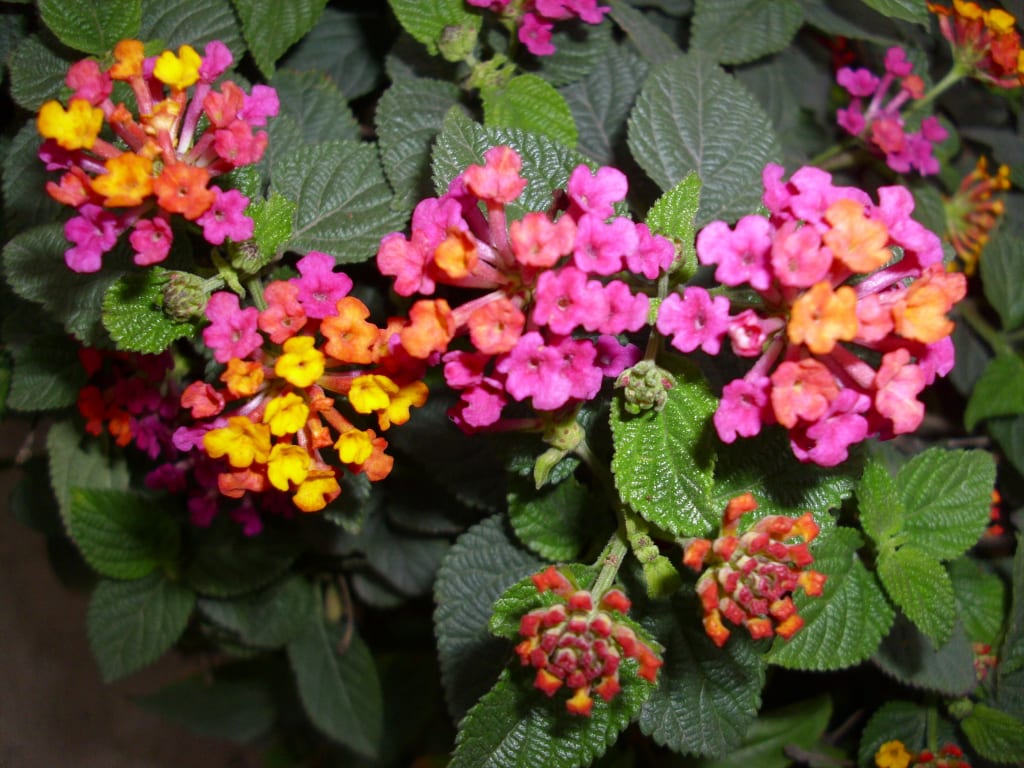Coromoto's Flowers
Learning the meaning of value

Coromoto was a ten-year-old girl with the life dissatisfaction of a grumpy eighty-five-year-old man. She was annoyed with everything in her life, including the flora and weather that surrounded her. In her quiet moments, she would enviously look at the calendar on her bedroom wall with photos of flowers and lush gardens in the United States. Those calendars reflected changes in season she had never experienced. She longed for an environment that wasn’t as harsh as hers and as cool as theirs. Her mining town was arid, hot, the soil was made of red clay and there were very few trees outside of the riverbanks. Heat was her oppressor and she saw greenery as her liberator.
Some of Coromoto’s neighbors had managed over the years to create cool mini green spaces in their backyards, but that required a lot of water consumption which was expensive, along with a serious green thumb to ensure plants could survive the red clay. Coromoto’s parents never managed to create that kind of space successfully in their own back yard. Almost every plant they attempted to grow died, and the ones that survived barely did so: The mango tree would be cut down because the roots were breaking the home’s foundation, the coconut tree never produced coconut and the lime tree would be cut down to build Savannah’s bedroom.
The lack of trees and plants was stifling; visiting the places where trees did grow, was also stifling. When it came to vegetation, Coromoto experienced life at two extremes, she either had Amazon-like foliage, extreme heat and humidity or Sahara-like-desert-dry-heat with no trees. Coromoto just wanted something in between. A space cool enough that would let her leave her home for more than a few minutes at a time.
At school, Coromoto hated her agriculture class because she saw it as a sham, no one could grow anything where only sulfur, bauxite and manganese could thrive. One day Coromoto’s father wasn’t able to pick her up from school, so she had to walk home. On her way she spotted a nursery; she had never seen a nursery before and just assumed it was a perfectly manicured backyard. The space looked empty now, but as though someone was caring for these plants and there was no sign reflecting what the building was. She made a mental note of the greenery it had so that one day she could do the same to her backyard. After that discovery, every time she had to walk home, she would peek into the nursery and look at all the different kinds of plants the gardener tended.
On a lucky day Coromoto saw a man tending to the plants in the nursery. He waved her in and asked what she was looking for. Having an older man invite her into his home didn’t seem proper, but she didn’t want to be rude, especially since his invitation seemed so casual. She went in on high alert. Coromoto was confused by the invitation and didn’t want to let on that she had no idea what he was asking her. Fortunately for her, he was busy and frazzled and didn’t have patience for her silence. He rambled on before she could say anything “are you looking for something to pot, or grow outside? Do you have shaded areas? I am here to help, just let me know what you need, but I also have to finish watering these plants, so just yell if you have questions or find what you need.” Once he walked away, she could breathe a little and take her time, he clearly had no interest in her, so she was definitely safe, but what was he trying to glean? She walked around, being very attentive to each plant until she noticed a pattern: Every plant had a price tag! This was a BUSINESS, not a yard! She found relief while also noticing that the prices were too high. She would not leave today with a plant but asked for recommendations to her pretend yard.
He suggested plant after plant and after glancing at the price she would pretend she didn’t like it. He finally presented her with a flower that she liked and had a price tag that was within reach. She told him she would stop by another time to pick it up. Coromoto needed to save her lunch money for a few days to buy the flower. The flower was colorful, didn’t need much maintenance and bloomed all year. The flower reminded her of the pattern on the paper she used to wrap her textbooks that year. She came back a few days later and pulled out her crumpled-up lunch money from her pocket to buy the plant.
She was so happy with the plant, but when she arrived home, her father would yell at her for wasting her money and her neighbors would laugh at her for buying a weed. They explained that if she were to go into the neighboring mountains, she could find it for free, she had been taken by a con artist. She hated the oppressive heat of the mountains, so she never went there and didn’t know this plant grew there; she felt stupid, defeated and didn’t know what to do because she genuinely thought the flower was gorgeous. She tried watering her plant, but every time she did, her neighbors would laugh, so she stopped taking care of it and let the weed die.
Her father again would yell at her for letting the plant die. Why didn’t she care for it? She explained that since he thought she wasted her money and everyone was calling it a weed, that it was best to just let it die. He then explained to her that for him it was a waste of money because he didn’t like it, and therefore didn’t value it, but she obviously liked it, otherwise, she wouldn’t have gone days without eating lunch to buy it. He warned her of knowing the difference between price and value, if she let everyone else determine what is valuable in life, she will miss out on the most priceless moments and people that cross her path. Only Coromoto could determine what is valuable to her, and in her life what was to have meaning to her. Value had nothing to do with price.
Years later she would move to the U.S with her family and have that yard she always dreamed of, but she would not see that flower in that region. It was bittersweet, she had the weather, just not the flora that once made her so happy. One year, she decided to visit Kenya for a vacation and on the road to her hotel she noticed the flowers along the road. They were the ones she bought at that nursery near her school! She started to take their photo, but this time her husband made fun of her for photographing the weeds instead of the wildlife. She deleted the photos to make her husband happy. When she returned from the trip, she hated herself for having listened to him. She had not learned the lesson that only she could determine the value of that flower to her.
Another time, she went to Peru, the garden in the yard of her first hotel had so many of these flowers. For the first time in her life, they were considered plants and not weeds. It was okay for her to appreciate them and take their photo. They made her home-sick and she became angry at herself for being so easily influenced by those around her. These flowers were beautiful, and it didn’t matter what others thought of them, but most importantly throughout the years these flowers have become more valuable to her and no one else could be in a position to understand the value of those flowers to her.

One day Coromoto went to visit her mom. Her mom was an avid gardener and changed plants each season. On this visit, Coromoto found vindication in her mom’s garden. The flower was planted there and thriving. Thousands of miles away from home was this weed-turned plant. Her mom, forgetful of what happened years earlier went on and on about how important these flowers were as pollinators and supporters of butterflies. Without these flowers, butterflies could be endangered, and our food supply was at stake. The flowers were pretty, but most importantly, they were priceless. Upon realizing how important her mom’s acknowledgement of the value of these flowers was, Coromoto became aware that she still had not learned the lesson that only she could determine what is and isn’t valuable to her.
About the Creator
Shamaine Daniels
https://linktr.ee/shamainedaniels






Comments
There are no comments for this story
Be the first to respond and start the conversation.